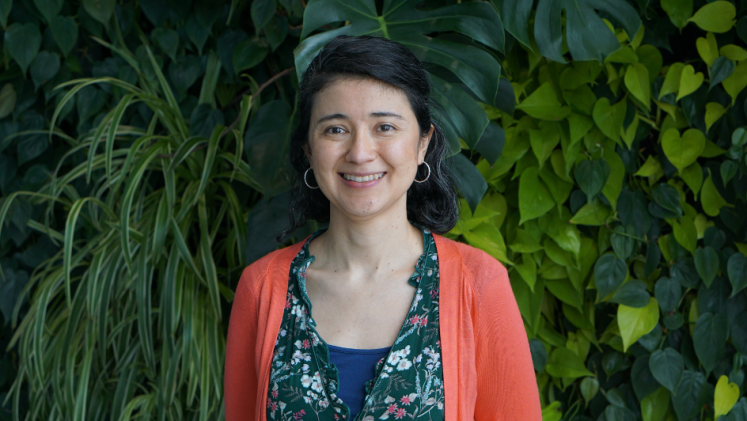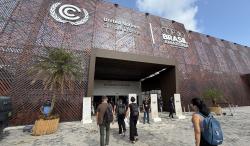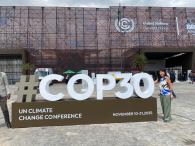Liliana Narvaez works for the Environmental Vulnerability & Ecosystem Services (EVES) division at UNU-EHS. She is also among the lead authors of the Interconnected Disaster Risks reports. For both, her expertise in volcano risk management, ecosystem-based approaches in disaster risk reduction and adaptation, as well as the vulnerability of social-ecological systems are of great value. We sat down with her to discuss the role wetlands play in our lives.
Why are wetlands important in mitigating and adapting to climate change?
Beyond the better-known examples, such as mangroves in coastal areas which reduce the intensity of high waves during storms, wetlands are invaluable for our well-being. For instance, some wetlands can help provide water during dry spells, while others support regulating floods during heavy rain periods, absorb CO2 and are useful allies in fighting climate change. What makes them particularly effective as environmental allies is their presence all over the world, ranging from areas like savannas to coastlines to mountainous regions. As such, wetlands are amongst the most biologically diverse ecosystems, which makes them well-suited for adaptation and mitigation purposes and highly relevant for climate discussions.
It is said that wetlands are nature’s greatest resource. Why do humans and wetlands need each other?
Humans and wetlands have always been inextricably linked as wetlands are among the ecosystems that have provided many of the resources essential to our survival, such as water and food supply. We need wetlands for their ecosystem services: the benefits they supply to humanity. Thus, wetlands are interwoven with human history. It is not by accident that many cities were founded near rivers, for example. Because of that close and interconnected relation, they are embedded in not just our past, but also our future.
The relationship between humans and wetlands is a symbiotic one, because wetlands also need us. Almost 90 per cent of the wetlands on our planet have been degraded and we are losing them in a rapid pace: three times faster than we are losing our forests. Simply declaring them protected areas with no human intervention is not enough. We need to actively restore them and appreciate what wetlands have been doing for us by giving back to nature. It is up to us to bring balance back to the relationship in a sustainable and healthy manner, not just for the wetlands’ sake, but also for ourselves.
How can we best protect wetlands from further degradation and restore them?
Advocacy is key. People are generally aware of the importance of wetlands nowadays, but the speed at which we are losing healthy wetlands is alarming and has many consequences. Take the rate at which species are going extinct, for example. If we lose a mangrove species in a coastal area, we could lose all their ecological connections. Picture an animal species whose only habitat is that specific mangrove species that went extinct. We would lose that animal species, after which we could also lose other connections that depend on the previous animal, creating a domino effect of extinctions.
Because of the interconnected nature of wetlands to us humans and biodiversity, we need to keep bringing their protection and restoration to political agendas. The more awareness we create, the sooner those in charge can implement what is needed to restore these precious ecosystems. We scientists also have a role to play: we can contribute to showing that this is an international priority. In developing countries with pressing issues like poverty and conflict, wetland restoration could exceed local capacity. International organizations can play a crucial role by providing assistance beyond awareness-raising and resource allocation.
You have two major passions: volcanoes and wetlands. Where does the love for wetlands come from?
I was born in a place in Colombia that is surrounded by majestic volcanoes and beautiful wetlands. As a child, I collected rocks from the riverbeds near my house. Without knowing at that time, my favourite rocks were always volcanic. I ended up studying geology because I wanted to better understand the planet. As a Colombian geologist I got to travel a lot, and besides rocks I discovered so many beautiful wetlands in my country. Later, I took the Master’s Programme Geography of Environmental Risks and Human Security jointly offered by UNU-EHS and the University of Bonn, where one of the courses is dedicated to ecosystems ( “Ecosystem-based approaches for disaster risk reduction and climate change adaptation”). I learned about nature-based solutions and the superhero-role of wetlands, which has deepened my understanding and fostered even greater admiration and respect for them. I am delighted to continue expanding my knowledge in the years to come!



